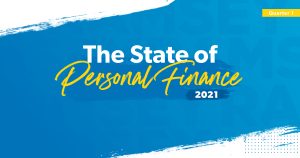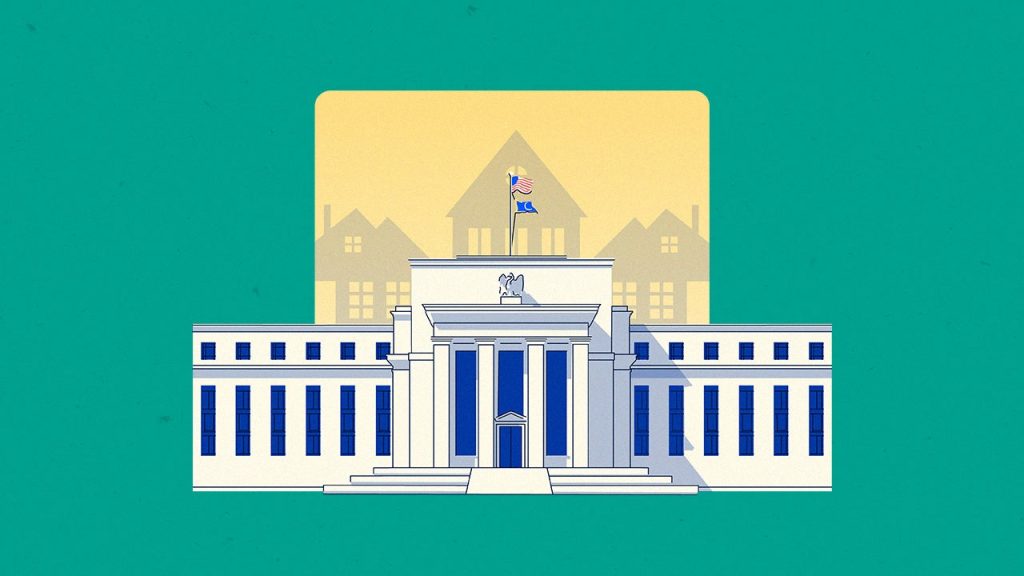The Federal Reserve’s interest rate decisions influence what you pay for variable-rate home equity lines of credit (HELOCs) and new home equity loans. Not you personally, of course — your own financials determine that — but the offers you’ll see lenders advertise, and the general rate trends.
But how? Let’s break down how the Fed’s monetary policy, announced in structured meetings throughout the year, affects how much it’ll cost you to borrow against the ownership stake you’ve built up in your home.
How does a Fed rate affect HELOCs?
When the Fed changes the federal funds rate, the interest rate banks charge each other for overnight loans to meet reserve requirements, it affects other benchmarks — such as the prime rate, the interest lenders charge their largest, most favored clients. The prime usually runs 3 percentage points higher than the fed funds rate. When the fed fund rate moves, the prime rate moves up or down in tandem. Many lenders directly tie the rates on HELOCs and home equity loans to the prime rate — often adding extra percentage points onto them — for the ultimate rate you, the borrower, pay.
The Federal Reserve is finally beginning to slash rates (see box), which means that HELOCs could move lower in the short term. But they’ve had a bumpy ride: In November 2023, the average HELOC interest rate eclipsed 10 percent — the highest HELOC rate in over 20 years, according to Bankrate’s national survey of lenders. They dipped back down into the single digits with the new year, though. Since the end of September, HELOCs have been trading below 9 percent and, along with home equity loans, they’re forecast to retreat further in 2024.
The Fed’s latest meeting
At its Nov. 6-7 meeting, the Federal Reserve cut interest rates by a quarter point as inflation’s growth continues to slow.
“We continue to be confident that with an appropriate recalibration of our policy stance, strength in the economy and the labor market can be maintained with inflation moving sustainably down to 2 percent,” said Jerome Powell, chairman of the Federal Reserve, in a post-meeting statement.
November’s move is the second rate cut this year, following the Fed’s half-point reduction on Sept.18, “The economy continues to perform well, even better than expected, so there was no need for the Fed to replicate the larger half-point cut in September,” says Greg McBride, CFA, Bankrate’s chief financial analyst.
McBride expects the Fed to lower rates at its next meeting on Dec. 17-18, “but at the more modest quarter-point increment as they continue to slowly take the foot off the brake pedal.”
What home equity borrowers should know about the Fed
Because HELOCs usually have variable interest rates, the cost of borrowing can rise or fall with the federal funds rate. If the fed funds rate goes up, your HELOC gets more expensive. When it falls, your HELOC gets less expensive.
Home equity loans, on the other hand, come with fixed rates, so they aren’t as deeply impacted by fed funds rate movement. Once you close the equity loan, your rate won’t change. But of course the rate you get on a new loan reflects the fed funds rate activity and its impact on the prime rate.
If you want stability in your budget, know that with a HELOC, there’s no real way to predict whether rates will rise, fall or stay the same. Not only does your interest rate affect monthly costs; it can also greatly impact how much you pay for the line of credit overall.
Before you open a HELOC, understand the maximum interest rate, when the draw period ends and whether you’re responsible for interest payments only (or not) during this period.
If you already have a HELOC but don’t have a balance (in other words, haven’t drawn from it), rising rates won’t affect your wallet all that much. If you do owe, you’ll have a larger monthly payment to cover, usually within the next two billing cycles. This applies whether you’re in the draw or repayment phase.
If rates do rise, you might want to explore whether you can lock in a fixed rate on a portion of your HELOC balance. This isn’t an option with every lender, and there might be some limitations if it is.
Overall, though, “having a debt repayment plan is the best way to reduce the impact of high HELOC rates,” McBride advises.
Home equity loan or HELOC: Which is better?
There’s no single answer. Depending on the Fed’s policy, where interest rates are heading and the nature of your financial need, one may be more ideal than the other.
HELOCs benefit the most from rate decreases. In the wake of the Fed’s recent cuts this year, a HELOC may be more beneficial than a home equity loan because the rate could drop more dramatically. Also, with a HELOC, you can draw funds as you need them, and you only have to pay interest on the funds you actually take out. So, if you don’t need the full sum on your line of credit upfront, you can take what you need now and wait until rates rates decline further.
On the other hand, home equity loans tend to have lower interest rates than HELOCs. As of Nov. 7, interest rates on HELOCs averaged 8.70 percent, while 15-year home equity loans averaged 8.42 percent, according to Bankrate’s national survey of lenders.
If you need a set large amount, a home equity loan will get you the funds with a predictable monthly payment. Plus, if rates fall by a large amount, you could always consider refinancing your HE Loan, though you will likely need to pay closing costs.
“If you’re undertaking a home improvement project where costs will be incurred in stages, that is best suited to a home equity line of credit,” says McBride. “If you’re doing a debt consolidation where all the funds are disbursed at once, a fixed rate home equity loan may be the better choice.”
Is now a good time to get a home equity loan or HELOC?
With inflation’s growth rate now much closer to the Fed’s 2-percent benchmark, rates on HELOCs and new home equity loans could drop in the near term.
“Over the next 6-12 months, I see the home equity-borrowing landscape increasing as rates come down,” says Ryan Bennett, regional director of home loans at BOK Financial. “Many people already have a low first mortgage loan and will not want to refinance to access the increase in their home’s value. Home equity loans are the best option if they need to tap their equity.”
While the average mortgage-holding homeowner has more than $200,000 in tappable equity, McBride says borrowers should carefully evaluate the costs of accessing their home’s value through a HELOC or home equity loan.
“This isn’t free money and it isn’t the same as going to the ATM and withdrawing cash from your account,” says McBride. “It is borrowing, and it is still quite expensive borrowing. This isn’t the low-cost source of funds it was for the better part of 20 years.”
Bottom line: the Fed’s effect on HELOCs and home equity loans
The Federal Reserve’s interest rate decisions affect borrowing costs for many types of financial products, including home equity loans and lines of credit (HELOCs). When the Fed lowers its key rate, it causes the rates that lenders ultimately set for HELOCs and new home equity loans also to drop, and vice versa.
If you plan on taking out a home equity loan — or already have a HELOC — keep an eye on how their rates react following a Fed announcement.
Read the full article here










